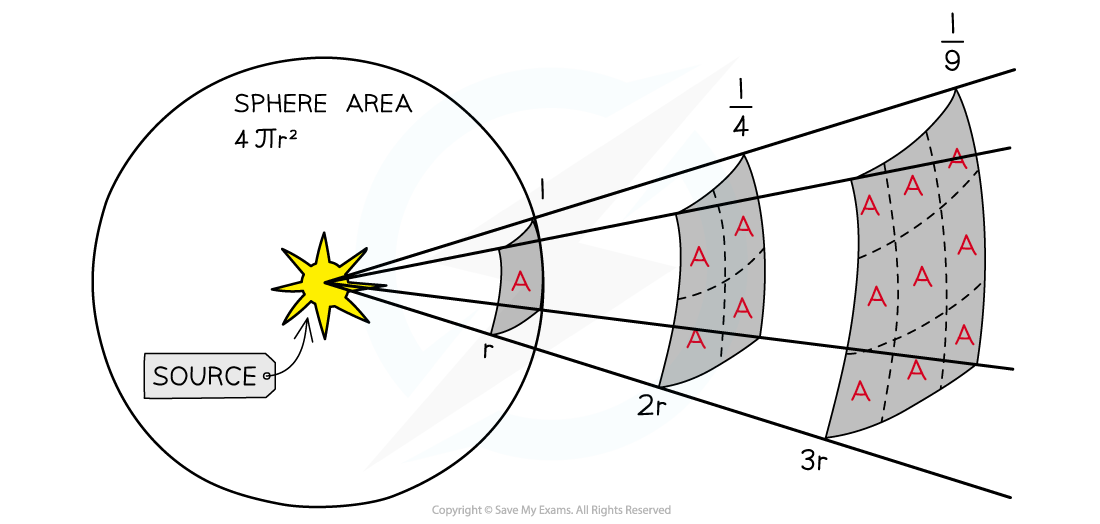Syllabus Edition
First teaching 2023
First exams 2025
Luminosity & Radiant Flux (Cambridge (CIE) A Level Physics): Revision Note
Defining luminosity
Luminosity is defined as:
The total power output of radiation emitted by a star
It is measured in units of watts (W)
Radiant flux intensity is defined as:
The observed amount of intensity, or the radiant power transmitted normally through a surface per unit of area, of radiation measured on Earth
The difference between luminosity and radiant flux is:
luminosity is the total radiation that leaves the star
radiant flux intensity is the amount of radiation measured on Earth
by the time the radiation reaches the Earth, it will have spread out a great deal, therefore, it will only be a fraction of the value of the luminosity
Luminosity and radiant flux of a star

The luminosity is the total power output of the star, whereas the radiant flux is what is measured on Earth
Inverse square law of flux
Light sources which are further away appear fainter because the light it emits is spread out over a greater area
The moment the light leaves the surface of the star, it begins to spread out uniformly through a spherical shell
The surface area of a sphere is equal to
The radius r of this sphere is equal to the distance d between the star and the Earth
By the time the radiation reaches the Earth, it has been spread over an area of
The inverse square law of flux can therefore be calculated using:
Where:
F = radiant flux intensity, or observed intensity on Earth (W m-2)
L = luminosity of the source (W)
d = distance between the star and the Earth (m)
This equation assumes:
The power from the star radiates uniformly through space
No radiation is absorbed between the star and the Earth
This equation tells us:
For a given star, the luminosity is constant
The radiant flux follows an inverse square law
The greater the radiant flux (larger F) measured, the closer the star is to the Earth (smaller d)
The inverse square law of flux

Inverse square law; when the light is twice as far away, it has spread over four times the area, hence the intensity is four times smaller
Worked Example
A star has a known luminosity of 9.7 × 1027 W. Observations of the star show that the radiant flux intensity of light received on Earth from the star is 114 nW m–2.
Determine the distance of the star from Earth.
Answer:
Step 1: Write down the known quantities
Luminosity, L = 9.7 × 1027 W
Radiant flux intensity, F = 114 nW m–2 = 114 × 10–9 W m–2
Step 2: Write down the inverse square law of flux
Step 3: Rearrange for distance d, and calculate
= 8.2 × 1016 m

You've read 0 of your 5 free revision notes this week
Sign up now. It’s free!
Did this page help you?
